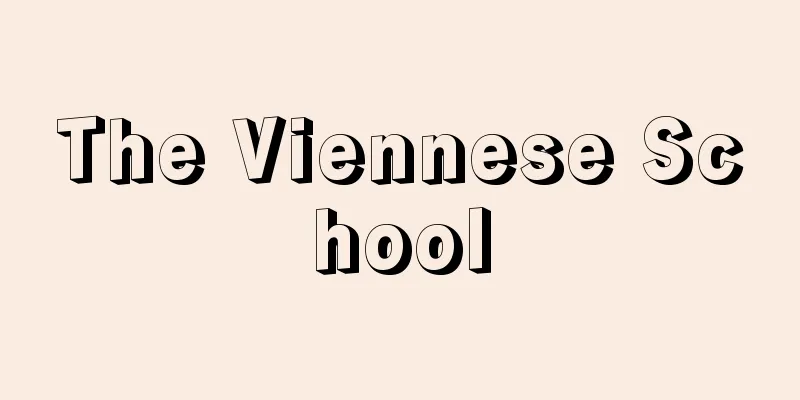The Viennese School

|
Although the term is broadly used to refer to all composers who made Vienna, Austria, their creative center, it is generally used to limit the term to the following three schools: (1) The Viennese Preclassical School These composers were active in the mid-18th century, during the transitional period from Baroque to Classical music, and they developed the foundations of the Classical style. As homophonic writing took hold, the development of new genres based on the sonata form that dominated the Classical period, such as symphonies, string quartets, classical sonatas, and concertos, was not limited to Vienna, but was also taking place simultaneously in Berlin, Mannheim, Paris, and other parts of Europe. However, the existence of the Viennese Preclassical School, whose representative composers were Florian Leopold Gaßmann (1729-74), Matthias Georg Monn (1717-50), and Georg Christoph Wagenseil (1715-77), is particularly noteworthy because of its direct connection to Haydn, the founder of the Classical period. (2) Viennese Classical The name given to the three great masters, Haydn, Mozart, and Beethoven, who developed the forms and styles established by the Preclassical School from the late 18th century to the early 19th century and created a world of supreme sound worthy of being called classical. In addition, Schubert, who composed during the same period as Beethoven, may also be added. As the name of the Classical School indicates, the music of the three great masters is compared to the classical art of Greece and Rome, and so instrumental music, which brings out the beauty of its composition, tends to be emphasized in general, but their compositions are balanced between vocal and instrumental music, and they worked on a wide range of genres, including church music, opera, and song. Although the Classical School is based on the style of the Preclassical School, each of the three great masters actively introduced Baroque techniques. In that sense, it can be said that the unique musical style of the Classical School was born from the synthesis of the Baroque and Preclassical Schools. (3) Second Viennese School or Viennese Atonal School: This refers to a group of atonal and twelve-tone composers active in the early 20th century, including Schoenberg and his disciples Webern and Berg. [Hiroshi Nakano] "Library of Commentaries on Famous Pieces by Composers 16, Second Viennese School" (1994), edited and published by Ongaku No Tomosha; "People of the Second Viennese School - Schoenberg, Webern, Berg" by J.A. Smith, translated by Yamamoto Naohiro (1995, Ongaku No Tomosha); "Mozart and Classical Music" by Francesco Salvi, translated by Hata Shunichiro (1997, Yamaha Music Media) [References] | | | | | | | | | | |Source: Shogakukan Encyclopedia Nipponica About Encyclopedia Nipponica Information | Legend |
|
広くはオーストリアのウィーンを創作活動の中心地としたすべての作曲家たちをさすが、一般には次の三つの流派に限って用いられる。 (1)ウィーン前古典派 バロックから古典派への過渡期にあたる18世紀中期に活躍した作曲家たちで、古典派様式の基礎を育成した。ホモフォニックな書法の定着とともに、古典派時代を支配するソナタ形式に基づく交響曲、弦楽四重奏曲、古典派ソナタ、協奏曲など、新しいジャンルの開発は、ウィーンに限らず、ベルリン、マンハイム、パリをはじめ広くヨーロッパ各地で同時に行われていた。しかし、ガスマンFlorian Leopold Gaßmann(1729―74)、モンMatthias Georg Monn(1717―50)、ワーゲンザイルGeorg Christoph Wagenseil(1715―77)らを代表作曲家とするウィーン前古典派の存在は、古典派の確立者ハイドンと直結している点で、ひときわ注目される。 (2)ウィーン古典派 18世紀後半から19世紀初頭にかけて、前古典派によって創始された形式と様式を発展させ、古典とよぶにふさわしい至高な響きの世界を生み出した三大巨匠、ハイドン、モーツァルト、ベートーベンに対する名称。さらに、ベートーベンの後期と創作時代をともにしたシューベルトを加える場合もある。古典派の名称が示すように、三大巨匠の音楽はギリシア・ローマの古典美術と比較されるところから、構成美が前面に出る器楽が一般に強調されがちだが、彼らの創作においては声楽と器楽が平均しており、教会音楽、オペラ、歌曲など、手がけたジャンルは広範にわたる。古典派は前古典派の様式に立脚しているとはいえ、三大巨匠はそれぞれバロックの手法を積極的に導入している。その意味では、バロックと前古典派を総合したところに、古典派独自の音楽様式が誕生しえたともいえよう。 (3)新ウィーン楽派あるいはウィーン無調派 シェーンベルクとその弟子ウェーベルン、ベルクら20世紀初頭に活動した無調主義、十二音主義の作曲家グループをさす。 [中野博詞] 『音楽之友社編・刊『作曲家別名曲解説ライブラリー16 新ウィーン楽派』(1994)』▽『J・A・スミス著、山本直広訳『新ウィーン楽派の人々――シェーンベルク、ヴェーベルン、ベルク』(1995・音楽之友社)』▽『フランチェスコ・サルヴィ著、畑舜一郎訳『モーツァルトと古典派音楽』(1997・ヤマハミュージックメディア)』 [参照項目] | | | | | | | | | | |出典 小学館 日本大百科全書(ニッポニカ)日本大百科全書(ニッポニカ)について 情報 | 凡例 |
Recommend
Karatachibana - Karatachibana
An evergreen small shrub of the Ardisiaceae famil...
Tokai [city] - Tokai
A city located in the northern part of Chita Penin...
"Memoirs of a Revolution"
…In the February Revolution of 1917, he contribut...
Jaw teeth - dentition
… [Invertebrate Jaw] Invertebrate jaws are genera...
Souveräne Diktatur (English spelling) Souverane Diktatur
...The reason why a dictatorship is a dictatorshi...
Carbon paper
A thin copying paper made by mixing colored subst...
Johann Heinrich Füssli
1741‐1825 Painter. Born in Zurich. He spent most o...
Dioxazine pigment - Dioxazine pigment
Dioxazine itself is a purple dye that has been kno...
Election interference
It refers to direct interference by public author...
Distant Nationalist - Enkakuchi Nashonarist
…The disintegration into these smaller communitie...
Guinea baboon - giniahhihi
→ Savannah Baboon Source: Shogakukan Encyclopedia...
Imuhashira - Imuhashira
...This refers to a cypress pillar that is erecte...
Quadrile
…It also refers to standing on tiptoes, not neces...
Nanshu painting
This is one of two major classifications of Chine...
Adenoid hyperplasia - Adenoid vegetation
What is the disease? Pharynx ( Into ) (Throat) To...








![Omagari [city] - Omagari](/upload/images/67cb182a3e025.webp)
